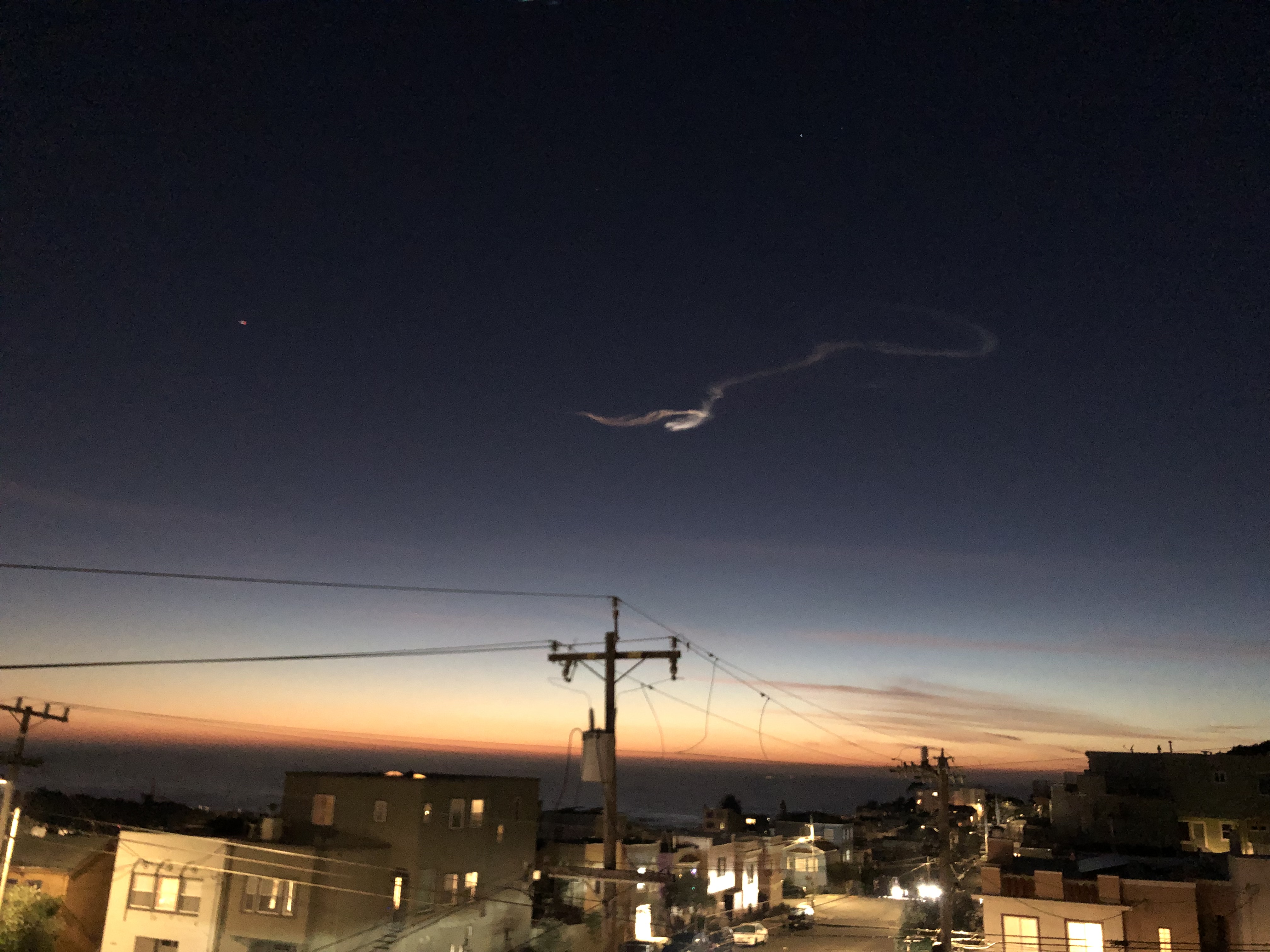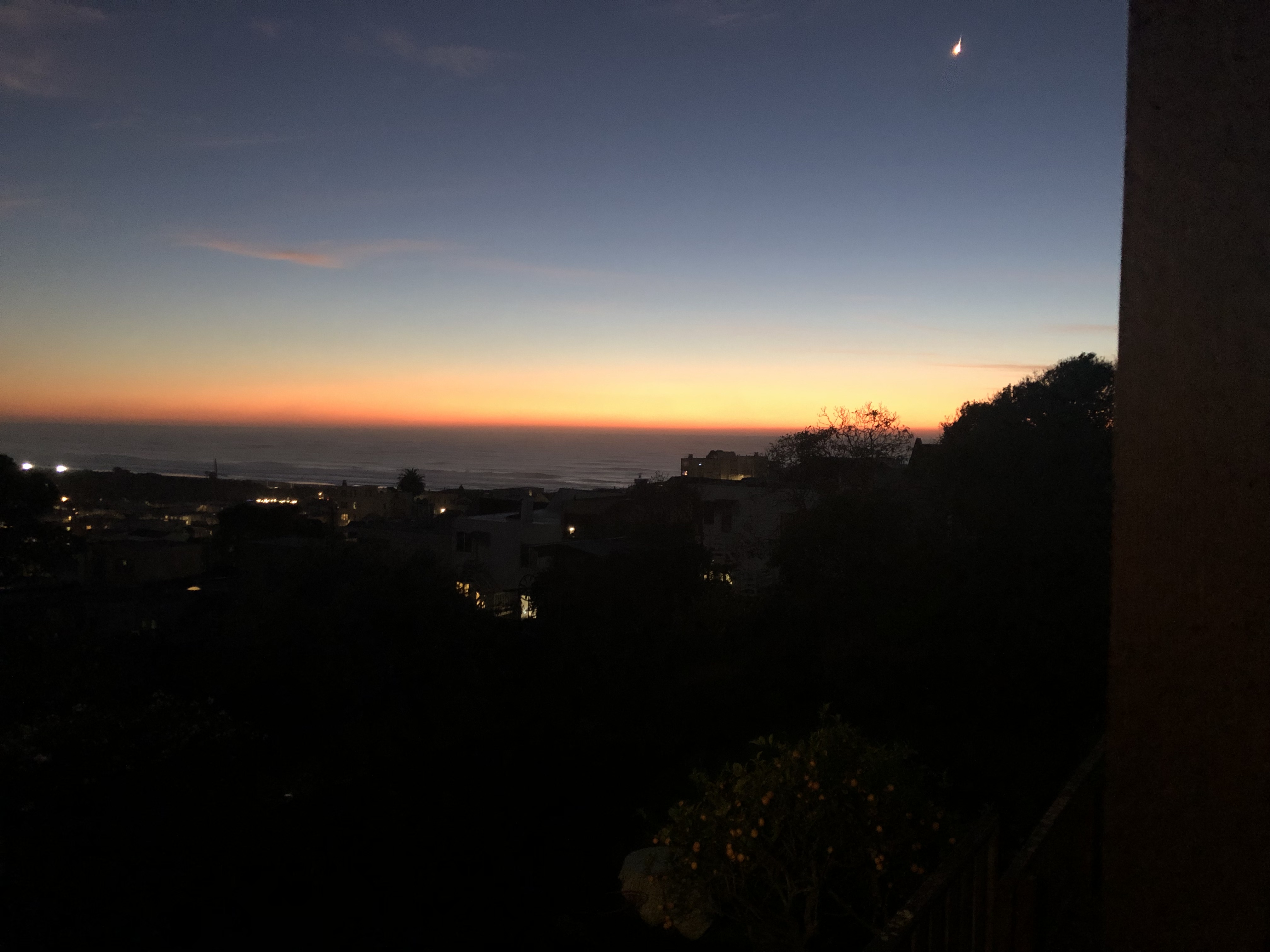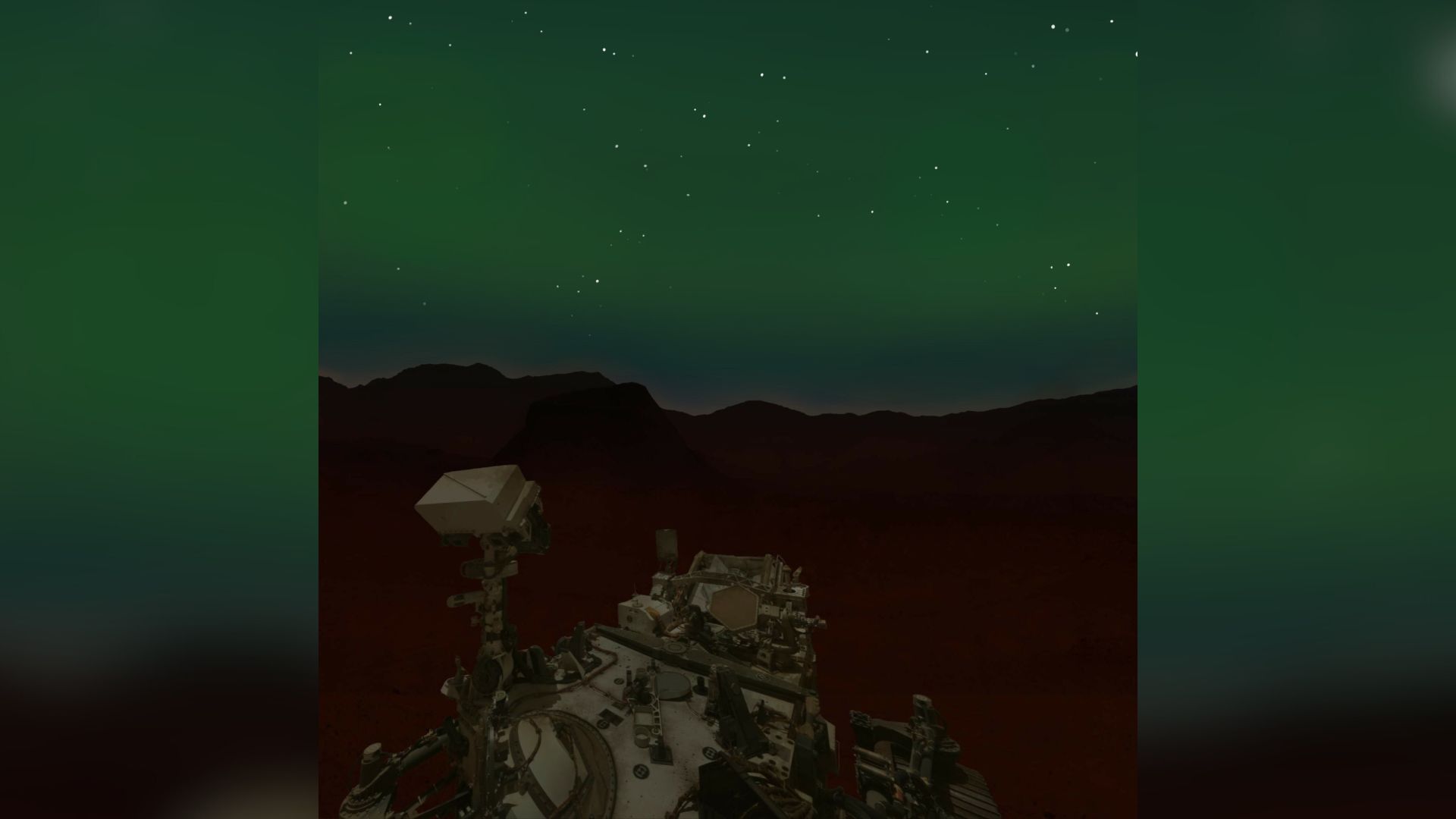Brilliant Fireball in California Leaves Twisted Trail Over San Francisco (Photos)

SAN FRANCISCO — A brilliant fireball lit up the sky over the San Francisco Bay Area shortly after sunset Wednesday (Dec. 19), leaving an odd, wind-twisted trail in its violent wake.
The meteor, which was visible across a wide swath of California, blazed up around 5:30 p.m. local time (8:30 p.m. EST; 0130 GMT on Dec. 20), first appearing as a bright-white point of light. As it streaked through the air on its high-speed death dive, the space rock sprouted a tail composed of tiny pieces of its own disintegrating body.
This "smoke trail" glowed silvery-white against the darkening sky, lit up from below by the sinking sun. It was very cool; I saw it from my apartment's deck. [Amazing Photos! The Awesome Gemind Meteor Shower of 2018]
In Stockton, California, just over 80 miles east of San Francisco, the meteor surprised some spectactors on the road.
"I saw it when I drove home," said Josie Malik (mother of Space.com managing editor Tariq Malik). "I didn't know what it was until I heard the news. It was really pretty and just hung there."

The tail soon twisted into a looping shape that resembled a question mark, inviting skywatchers to guess just what had caused it. And Bay Area folks mused widely on Twitter, invoking falling space junk or the launch of the NROL-71 spy satellite, which was scheduled to take place around that time from Vandenberg Air Force Base, on California's Central Coast.
But that launch didn't happen; it was scrubbed because of a rocket glitch. And the incoming object was moving too fast to be space debris, according to Jonathan McDowell, an astronomer at the Harvard-Smithsonian Center for Astrophysics who keeps tabs on the many objects orbiting Earth.
Breaking space news, the latest updates on rocket launches, skywatching events and more!
The culprit therefore was "for sure a meteor," McDowell said via Twitter Wednesday evening. The trail's contortion, he explained in another tweet, was the result of being "twisted around by upper-air winds."
Fireballs — meteors that blaze at least as brightly as Venus in the sky — aren't particularly rare. They occur several thousand times per day around the globe, according to the American Meteor Society. But most fireballs slam into the atmosphere over the open ocean, or over relatively unpopulated stretches of terra firma, so seeing one is pretty special.
And if you live in the fog belt of western San Francisco, and a fireball happens to pop up just after sunset on a gloriously clear December evening — well, it's really special. Maybe it even makes up for getting clouded out of the Great American Solar Eclipse last year.
Editor's note: If you caught an amazing photo of the California fireball that you'd like to share with Space.com and our news partners for a possible story or image gallery, send comments and images in to: spacephotos@space.com.
Mike Wall's book about the search for alien life, "Out There" (Grand Central Publishing, 2018; illustrated by Karl Tate) is out now. Follow him on Twitter @michaeldwall. Follow us @Spacedotcomor Facebook. Originally published on Space.com.
Join our Space Forums to keep talking space on the latest missions, night sky and more! And if you have a news tip, correction or comment, let us know at: community@space.com.

Michael Wall is a Senior Space Writer with Space.com and joined the team in 2010. He primarily covers exoplanets, spaceflight and military space, but has been known to dabble in the space art beat. His book about the search for alien life, "Out There," was published on Nov. 13, 2018. Before becoming a science writer, Michael worked as a herpetologist and wildlife biologist. He has a Ph.D. in evolutionary biology from the University of Sydney, Australia, a bachelor's degree from the University of Arizona, and a graduate certificate in science writing from the University of California, Santa Cruz. To find out what his latest project is, you can follow Michael on Twitter.
